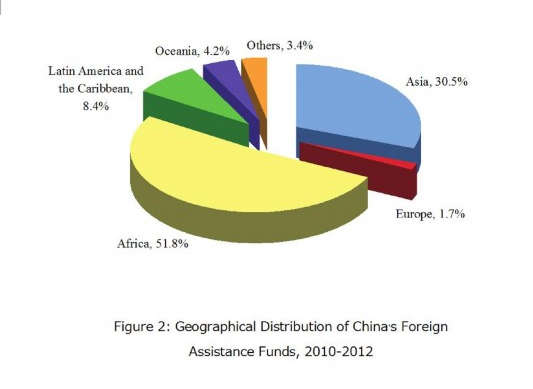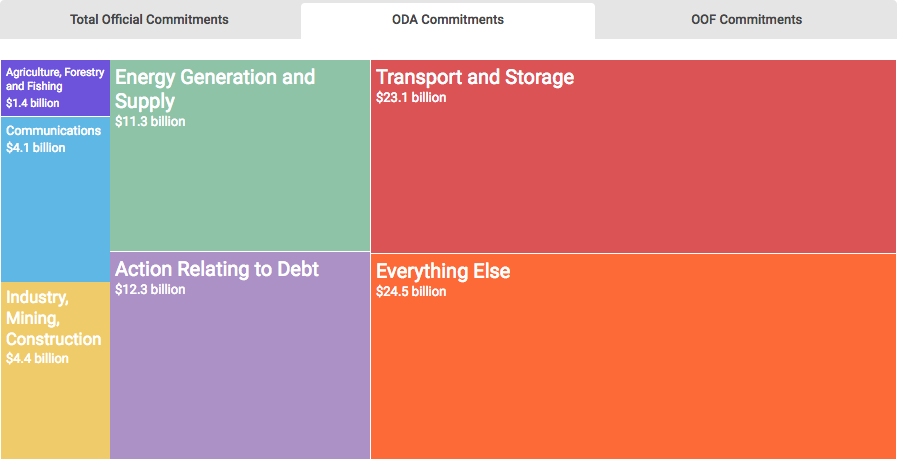
1. What is CIDCA’s mandate compared to MOFCOM’s previous mandate?
CIDCA’s mandate goes beyond MOFCOM mandate. In contrast to MOFCOM previously, it will be also in charge of developing aid strategies, drafting aid laws and doing aid related research (though it is no clear whether this will be done by CIDCA itself or whether it will be subcontracted). Another major difference is that CIDCA will be in charge of drafting country strategies, aid project evaluation and policy reviews.
2. Are CIDCA’s draft “Administrative Measures for Foreign Aid” the new aid law?
No, they aren’t. As the name says, these are Measures (banfa 办法) and not a Law (falü 法律). Measures are departmental regulations. This means that they will govern CIDCA’s internal operations, but they won’t apply to the work of other ministries. However, the draft Measures stipulate that CIDCA will be in charge of drafting a new aid law.
3. What about a new system for aid statistics?
According to Art. 38 of the draft measures, CIDCA “shall set up fully-covered statistical rules for foreign aid, and collect, summarize and prepare statistical data on foreign aid.” But this, in fact, is not a new development. MOFCOM previously had the same task, it was stipulated in MOFCOM’s 2014 Aid Measures in Art. 6. It’s not clear how successful MOFCOM actually was in implementing this task.
3. Will CIDCA be also responsible for the South-South Cooperation Fund?
As of now, the information is that China International Center For Economic And Technical Exchanges (CICETE) will be in charge of screening the proposals for the South-South Cooperation Fund. Some analysts say that CICETE will be taking over more tasks for CIDCA in the future.
4. Where can I get information on the priority sectors and geographical distribution of Chinese aid?
The most recent official Chinese figures are provided in China’s Foreign Aid White Paper from 2014, and cover the years 2010-2012. Earlier Chinese figures can be found in the 2011 White Paper. A new White Paper is expected for 2019. For figures up-till 2014 and also for more dis-aggregated numbers, you can consult the Aiddata project’s Global Chinese Development Finance Dataset. It’s based on data mining from openly available sources and is a highly valuable resource in light of absence of transparent official numbers from the Chinese government.
Geographical distribution of Chinese aid funds according to 2014 White Paper Top 10 recipients of Chinese ODA (2000-2014) according to Aiddata
Top 10 recipients of Chinese ODA (2000-2014) according to Aiddata
- Cuba ($6.7 billion)
- Cote d’Ivoire ($4.0 billion)
- Ethiopia ($3.7 billion)
- Zimbabwe ($3.6 billion)
- Cameroon ($3.4 billion)
- Nigeria ($3.1 billion)
- Tanzania ($3.0 billion)
- Cambodia ($3.0 billion)
- Sri Lanka ($2.8 billion)
- Ghana ($2.5 billion)
Sectoral distribution of Chinese ODA (2000-2014) according to Aiddata

Sectoral distribution of Chinese overall official finance (2000-2014) according to Aiddata
5. How much of Chinese aid is comparable to ODA according to OECD DAC standards?
About one third. One a small proportion of Chinese aid are grants. The majority are interest free and concessional loans. But only around one third of concessional loans meet DAC ODA criteria (>= 25% grant element). The rest is still below market rate but doesn’t meet DAC ODA criteria.
6. Do CIDCA’s Aid Measures say anything about aid standards? Is there any sign of China looking into adapting international aid standards?
The Measures don’t mention aid standards. In reality, China works simultaneously with two sets of systems. China-led multilateral institutions such as AIIB work on the basis on international standards (in AIIB, this was the prerequisite for European partners to join). China’s bilateral development cooperation works on the basis of partner/recipient country standards.
7. Will CIDCA be also responsible for multilateral development finance?
There are no indications of that. Ministry of Finance has been traditionally responsible for cooperation with IMF, World Bank and other multilateral banks and it doesn’t look like this is going to change.
8. According to Art. 4, China’s aid shall usher in a new type of international relations featuring win-win cooperation, 5 and promote the building of a community of common destiny. What is the “new type of international relations”?
The concept of “new type of international relations” and “win-win cooperation” are not aid specific, but have been successively introduced by Xi Jinping as pillars of China’s foreign policy (though “win-win” has been a guiding principle of Chinese aid since mid 1950s). Like many political concepts in China they are not clearly defined. An official explanation by China’s foreign minister Wang Yi can be found here. But what this does say, is that China’s government sees aid as a foreign policy tool and something to be used to promote China’s international agenda (though this is not unique to China).
You have questions on Chinese aid that may be of interest to the wider aid or China watchers community? Email me and I’ll try to include them in one of the next posts.
Leave a Reply